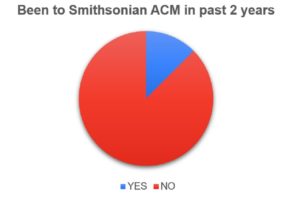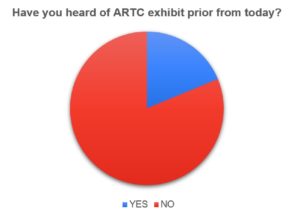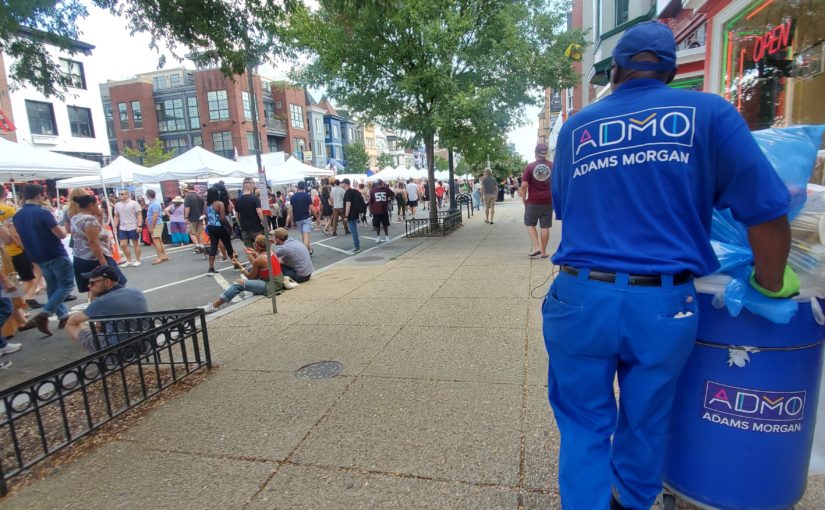A primary hope for our storytelling system is to reach new audiences beyond museum and library walls. Did we do it? How many people participated? One of our researchers shares a few observations from our big outreach at Adams Morgan Day last month.
On the beautiful Sunday day afternoon, I walked the Adams Morgan Day festival speaking with the community about the Smithsonian “Right to the City” exhibition — and our storytelling system.
Our approach and the idea of the exhibition were well received. The average person on the street seemed amazed and pleased to hear that such an exhibition exists that tells the stories of the city while also providing a platform for ordinary residents to share their stories.
Most had not been to the museum for the exhibition. Nearly 90% had not visited the museum in the prior two years (88% of the 112 people surveyed). To avoid listening to the choir, we primarily spoke with attendees away from the booth, who I spoke to while walking the festival.

One resident felt ashamed of not visiting but seemed relieved to hear about the upcoming re-opening scheduled for later this month.
A significantly higher percentage of attendees had been to a neighborhood library in the same time period (60%). This affirms our hope that the satellite exhibitions in a handful of libraries were a good idea.

Overall, awareness of the exhibition — including from press, the museum and libraries — was still only at 81% of attendees.

Several residents left testimonies during the event. (We had listening stations in several places in the neighborhood.) What did they sound like? Here is one excerpt:
“….I am from DC and have lived here my whole life. I am Ethiopian, African American and African muslim. Many people don’t know about this culture that comes with our people… and the making of this Chocolate City…”
– A local resident’s story, left during Adams Morgan Day
We were excited to spread history photos to attendees — by text message. (Each photo was chosen by the Smithsonian’s curator for the exhibition to help tell a key story in the neighborhood’s history that relates to its identity today.) Between our history map and raffle, more than 210 people requested history photos during the event. Some repeatedly asked the automated hotline to send them another (and we hope they shared them with friends). After the event, one benefit of the digital system was that we could follow-up with everyone that engaged and provide a link to the exhibition, and instructions on how to request more photos.
Much of our research is focused on the circulation of stories, but as these basic metrics show, our presence at street events does reach a new audience for the exhibition — and a good number of residents left with a history photo on their cell phone as a calling card to learn more.

This post was contributed by Tambra Raye Stevenson, who is a Ph.D. student and research assistant at American University School of Communication in Washington, DC, with feedback from the team at The Playful City Lab.
